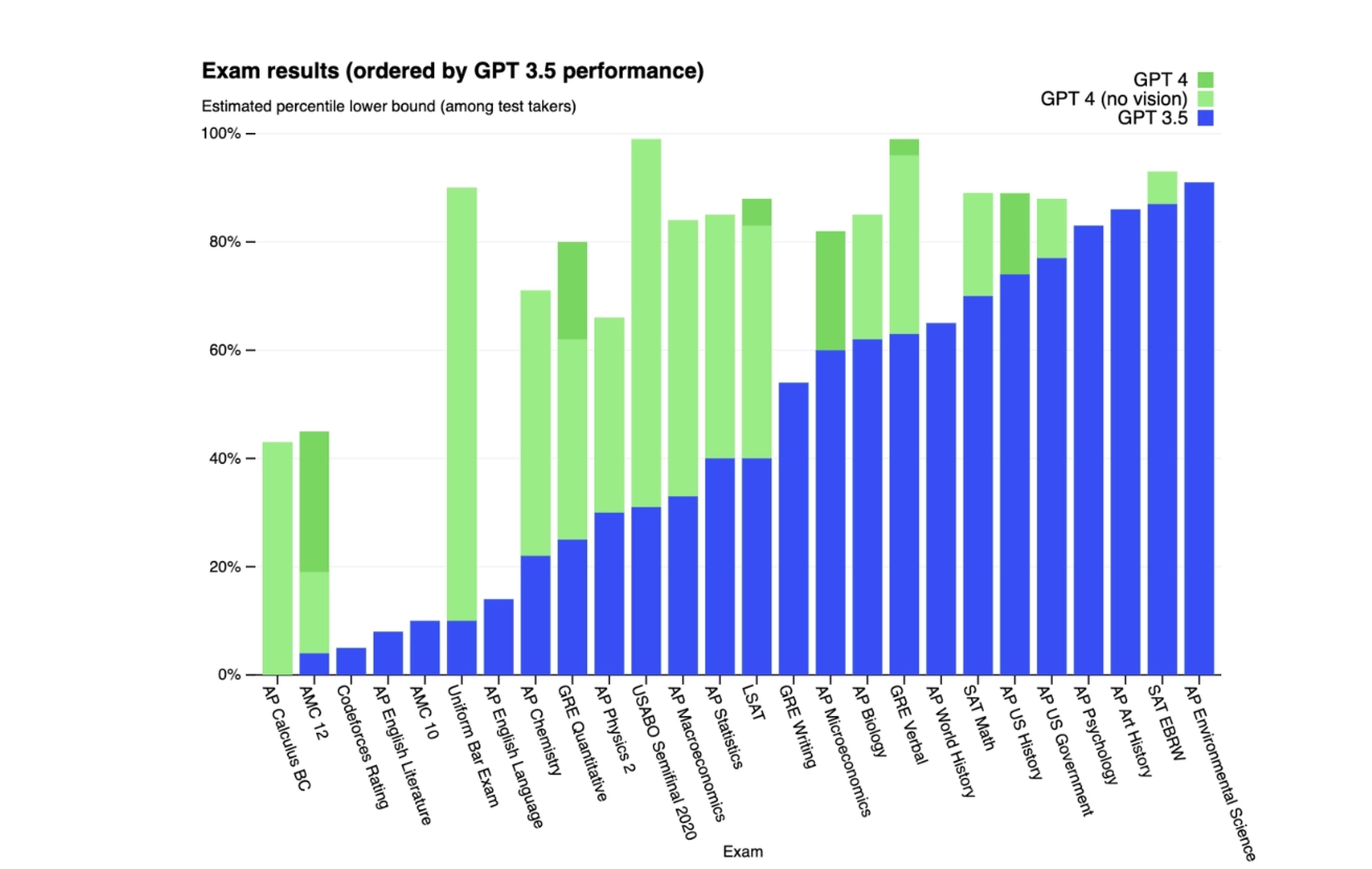[ad_1]
GPT-4, OpenAI’s new general language model, promises a huge performance leap over GPT-3, including improved text generation that mimics human behavior. Getting closer to excellence.
The GPT models (Generative Pre-trained Transformer) have been fascinated by the world of artificial intelligence. With improved performance over neural network architectures and unprecedented scale, these language processing models have revolutionized natural language-based AI. You only have to look at ChatGPT to come to this conclusion.
The language models pretrained by OpenAI, GPT-3 and the more recent GPT-4 are two of the latest technologies in artificial intelligence that are giving a lot of buzz (and will continue for many years). GPT-3 was launched in May 2020 and its successor GPT-4 has just seen the light of day (March 14).
With the growing popularity of ChatGPTwhich was developed by the same company, the question now is the extent to which OpenAI has innovated with the GPT-4 language model, what are its improvements and if there are really great advances compared to the previous version.
Both GPTs will offer advanced capabilities for natural language processing, but there are some significant differences between the two.
GPT-4 vs. GPT-3: What’s the difference?
More power on a smaller scale
It is important here to note that OpenAI, as usual, is very cautious when it comes to providing all the information and the parameters used in GPT-4 confirm the rule.
Many experts have been suggesting for some time that this improvement over GPT-3 will not come in the form of drastically increasing the parameters with which the model has been trained. In this case, more does not equal better. GPT-3 has 12 layers and 175,000 million parameters and it is estimated that GPT-4 surpasses it, but not with a huge difference.

With tools like ChatGPT, among others, it has already been shown that the number of parameters is not everything, but the architecture, data quantity and quality also play an important role in training. “In the future, many people will be surprised how powerful AI can become without increasing the parameters”says Sam Altman, CEO of OpenAI.
Multimodal nature
Another big difference to highlight and already announced by OpenAI is its multimodal nature. Instead of working solely with text, GPT-4 will also be able to accept images as input. That is, you can upload images to give instructions visually and that this ends up being transformed into text.
“We’ve created GPT-4, the latest milestone in OpenAI’s effort to extend deep learning. GPT-4 is a great multimodal model (accepting image and text input, and text output) that, while less capable than humans in many real-world settings, he exhibits human-level performance in various academic and professional benchmarks,” explains OpenAI in its press release.
Quality of the information
One of the biggest challenges facing NLP (Natural Language Processing) models is inaccurate training data, which ultimately makes them susceptible to providing misinformation.
OpenAI employs RLHF (Human Feedback Reinforcement Learning) algorithms to curb this problem. Human trainers use this algorithm to tune AI-powered models through highly supervised fine-tuning. Ultimately, this helps reduce the susceptibility of the model to misinformation, as well as to generate toxic or biased content.
less hallucinations
To contextualize, AI hallucinations, in a nutshell, are based on offering false but highly detailed information about an event that has not occurred. It is as if artificial intelligence became a futurologist when its use must be based on real and proven facts.
Logically, and as large companies such as Google or Microsoft have explained, their chatbots are not exact and can lead to errors, but the fact that they hallucinate and invent events that have not happened, goes one step further. It seems that this in GPT-4 is already being fixed.
“We spent six months making GPT-4 more secure and more aligned. GPT-4 is 82% less likely to respond to requests for disallowed content and 40% more likely to produce factual responses”said OpenAI.
OpenAI CEO Sam Altman admitted that despite the anticipation, GPT-4 “it’s still flawed, it’s still limited, and it still looks more impressive on first use than after spending more time with it”.
Despite this, GPT-4 is undoubtedly a great advance in the field of processing technology for language nature and AI. OpenAI announced it and has delivered. It has the potential to become a really powerful tool for anyone and we just have to wait and see the new applications that come out of this model and even an improved ChatGPT.
[ad_2]







Leave a Reply